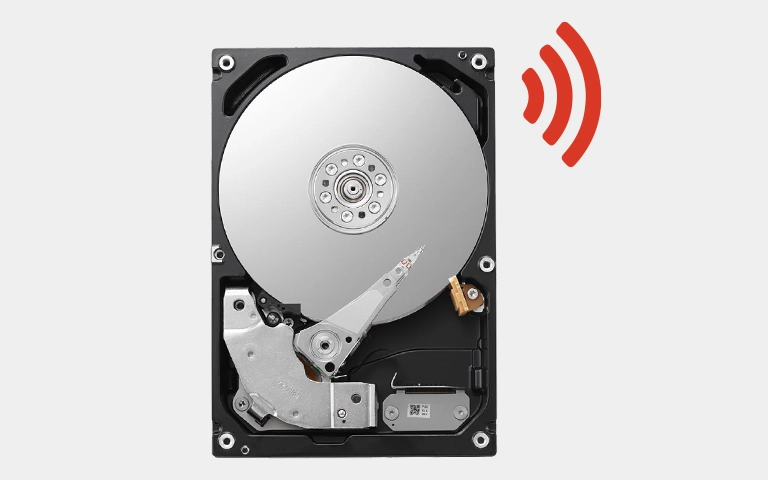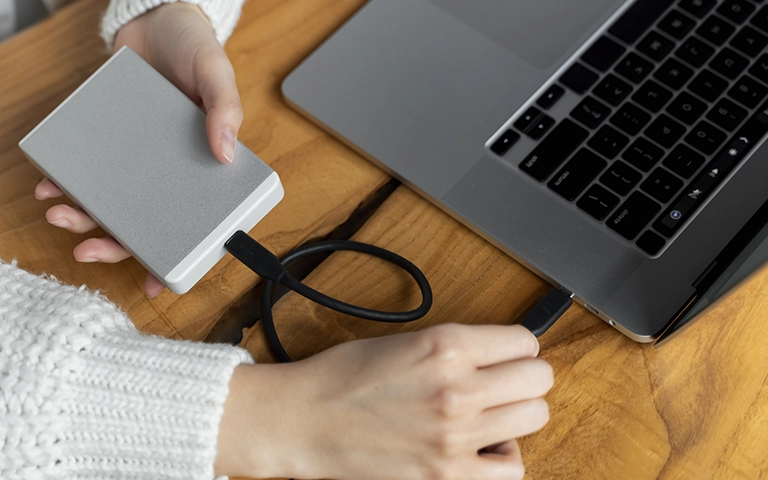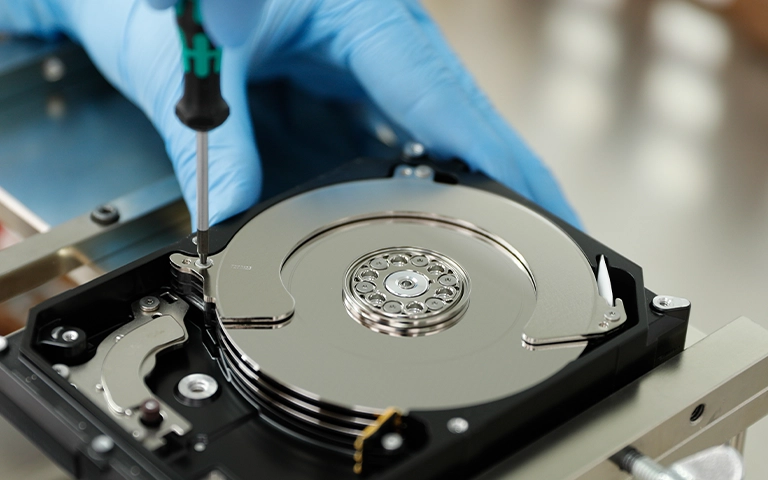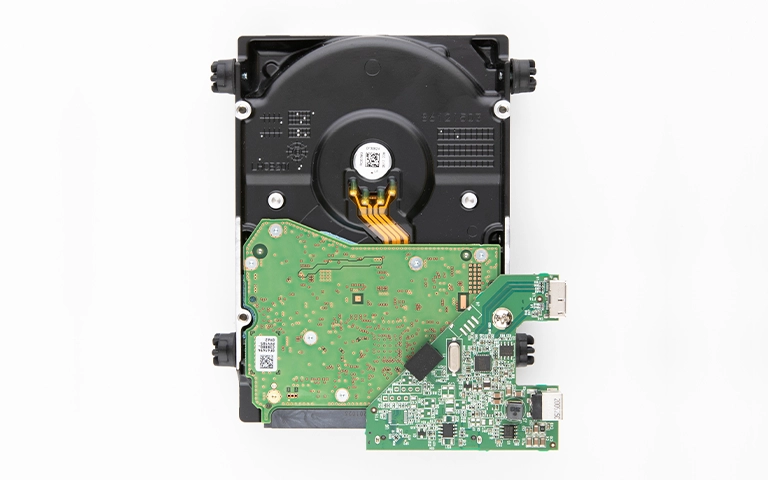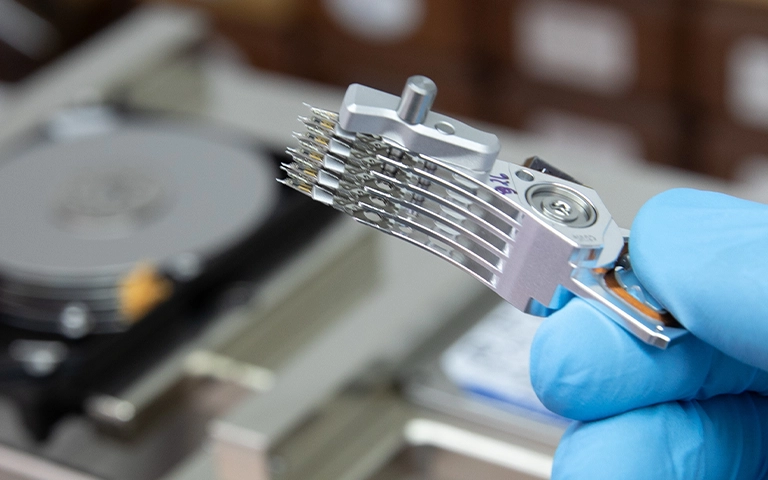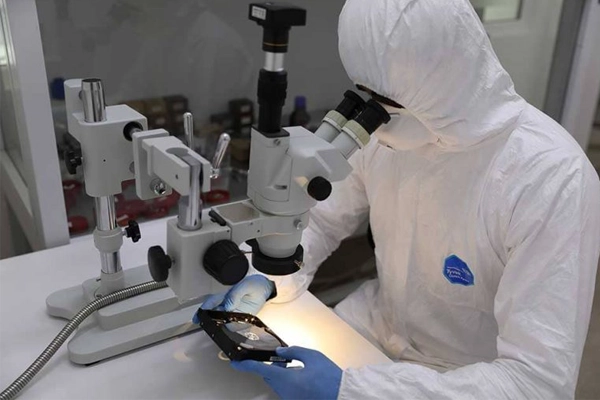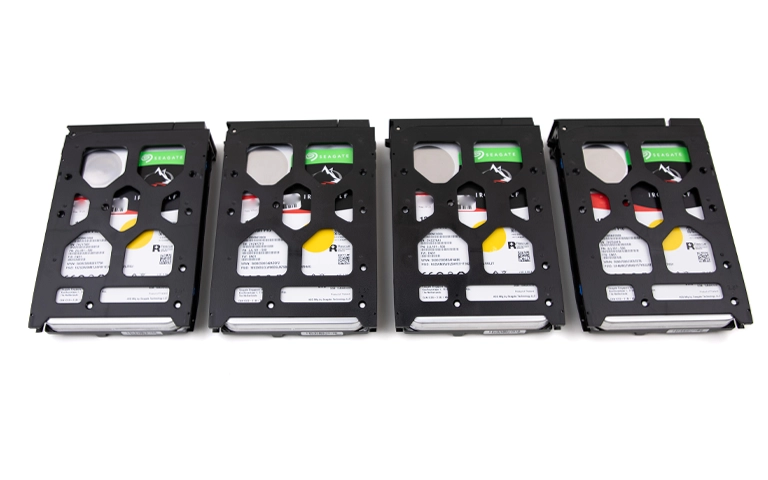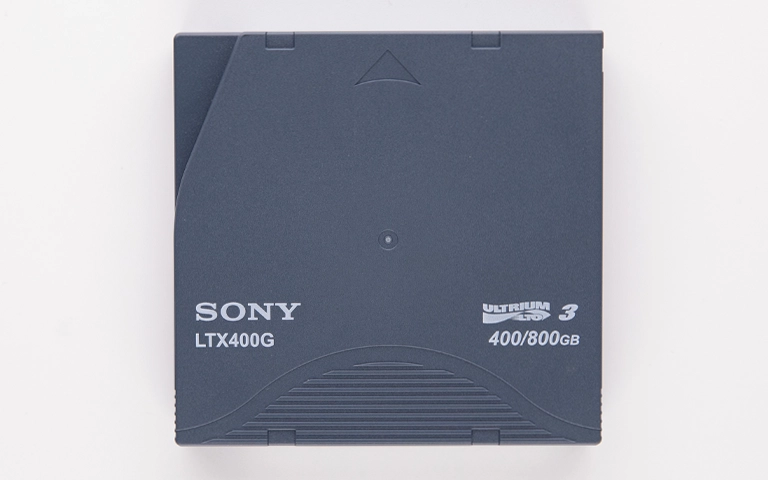Hearing your hard drive making grinding noise is a critical indicator of severe internal damage. Unlike routine operational sounds or even repetitive clicking this harsh, metallic noise typically signifies a serious mechanical failure potentially destroying your data with continued use. Addressing the issue correctly and immediately is essential to prevent further loss and explore recovery options.
Critical First Step: Power Off the Drive Immediately
If your hard drive is making grinding or scraping sounds, immediate action is required:
Power off the computer or external drive immediately and safely. If a normal shutdown requires drive activity, perform a hard shutdown (hold the power button). For external drives, disconnect the power source first, then the data cable.
DO NOT power the drive back on. Resist any urge to check if the noise stops or to try again. Every moment the drive operates while grinding likely causes further irreversible physical damage to the platters storing your data.
The grinding sound strongly indicates that the read/write heads have crashed onto the platter surfaces and are physically scraping away the magnetic layer storing your data. Continued operation must be stopped to prevent further destruction.
What Causes the Hard Drive Grinding Noise?
A hard drive grinding noise is overwhelmingly caused by a severe read/write head crash. This occurs when the heads physically impact the spinning platter surface instead of floating above it. The continued rotation drags the crashed heads, scraping the data-storing layer and producing the distinct metallic sound.
While extremely rare mechanical failures could cause noise, a distinct grinding or scraping sound almost always indicates a catastrophic head crash involving ongoing platter contact.
Head Crash and Platter Scoring
Inside a hard drive, read/write heads operate nanometers above platters spinning at high speeds. Events like physical shock (a drop), component failure, or ignored preceding issues (like clicking) can cause heads to crash onto the platter surface.
Physical Contact: Heads forcefully contact the platter instead of floating.
Scraping Action: As platters attempt to spin, crashed heads scrape the surface, destroying the magnetic layer holding data. This differs significantly from seeking issues causing repetitive clicking.
Debris Generation: Scraping creates microscopic debris, causing further damage internally.
Grinding signifies active, ongoing physical destruction of the storage media.
Consequences of Grinding: Permanent Data Loss
The grinding process physically destroys data in the scraped areas. The magnetic material is removed or rendered unreadable.
-
Irreversible Damage: Data on scored platter sections cannot be recovered by any known technology.
-
Potential for Partial Recovery: Data on undamaged platter areas might be recoverable if the damage is stopped immediately and specialized professional techniques are used.
-
Risk of Total Loss: Continued grinding, or damage to critical service areas, can make any data recovery impossible.
Why DIY Fixes Are Impossible and Destructive
For a hard drive making grinding noise, there are NO safe or effective DIY fixes. Common misconceptions are dangerous:
Software is Useless: Data recovery software cannot address severe physical damage or repair scrapes. Running software stresses the drive, worsening the damage.
Physical Tampering: Shaking or tapping will exacerbate internal damage.
Freezing: A harmful myth risking moisture damage; it cannot fix head crashes.
Opening the Drive: Requires a certified cleanroom. Dust contamination guarantees further damage, likely making professional grinding hard drive recovery impossible.
Attempting to “fix” a grinding drive yourself destroys any remaining recovery chance. Professional intervention is the only viable path.
Don't Let Data Loss Ruin Your Business
Minimize business disruption. We retrieve lost data fast, so you can focus on what matters.
Is Data Recovery Possible from a Grinding Hard Drive?
Recovery from a grinding hard drive is very challenging but sometimes partially possible if powered off immediately. Success depends on platter damage severity and location. It requires professional cleanroom assessment, potential donor parts (heads), and specialized imaging tools to read undamaged platter areas safely.
Recovery potential depends entirely on the extent of physical platter damage.
Factors Influencing Recovery Success
-
Time to Power-Off: The most critical factor. Less runtime equals less scraping damage.
-
Severity of Platter Scoring: Light scoring offers more potential than deep gouges.
-
Location of Damage: Damage to user data areas vs. critical firmware areas impacts success.
-
Component Condition: Ability to replace heads and manage debris.
The Professional Approach for Grinding Hard Drive Recovery
Attempting to recover data from a grinding HDD requires:
- Immediate Cleanroom Evaluation: The drive must be opened in a certified cleanroom (ISO 5 or better) to assess the visible platter damage and head condition without causing further contamination.
- Potential Head Stack Replacement: If heads are damaged, they must be replaced with a compatible set from a donor drive – a highly delicate procedure.
- Possible Platter Cleaning: Specialized, careful cleaning might be attempted to remove debris generated by the grinding, though this carries risks.
- Advanced Drive Imaging: Using specialized hardware that can read around damaged sectors and control drive parameters precisely, engineers attempt to clone data from the undamaged areas of the platters.
- Logical Reconstruction: Assembling the recovered raw data back into usable files and folders.
Recovery is often partial, prioritizing the most critical data possible from the readable platter surfaces.
Certified & Trusted Data Recovery
PITS Data Recovery is certified by leading industry authorities, ensuring secure and compliant data recovery for businesses and individuals.







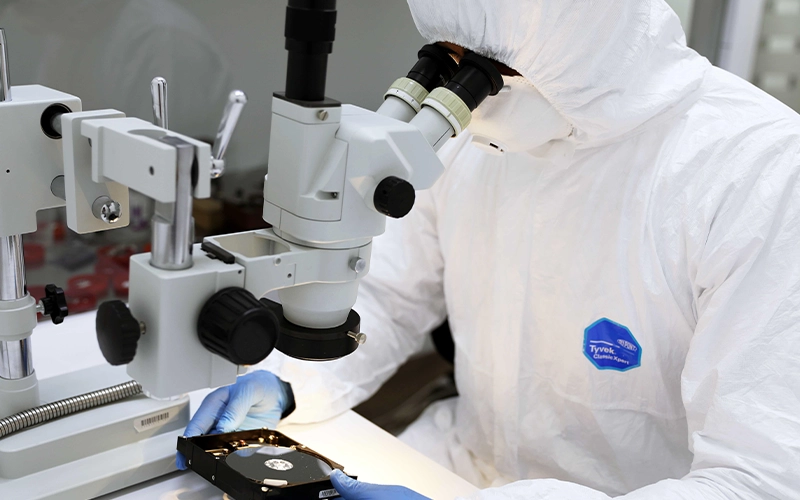
How PITS Data Recovery Tackles Severe Physical Damage Cases
PITS Data Recovery specializes in complex recoveries involving physical damage, including drives making grinding noises.
Certified Cleanrooms: All internal work uses ISO-certified environments.
Extensive Donor Inventory: Facilitates sourcing compatible parts.
Specialized Equipment: Advanced tools for head replacement, platter handling, and imaging damaged media.
Experienced Engineers: Expertise in diagnosing and handling catastrophic head crashes.
We provide a realistic assessment post-evaluation regarding grinding hard drive recovery potential. Learn more on our Hard Drive Data Recovery Service Page.
Get a Free Consultation.
Our recovery experts are ready to assess your device and guide you through the safest path to recovery. Fill out the form to get started.
"*" indicates required fields
Conclusion
Hearing your hard drive making grinding noise signifies active physical destruction.
- Immediate Action: Power off instantly.
- DIY Is Impossible: Do not attempt fixes or run software.
- Damage is Permanent: Focus is on recovering data from undamaged areas.
- Urgency is Key: Professional cleanroom evaluation needed ASAP.
This critical failure requires immediate cessation of use and expert intervention. If the data matters, your only viable path is immediate power-off and contacting a specialized service like PITS Data Recovery for grinding hard drive recovery. See our Overview of Common Hard Drive Problems for broader context.

